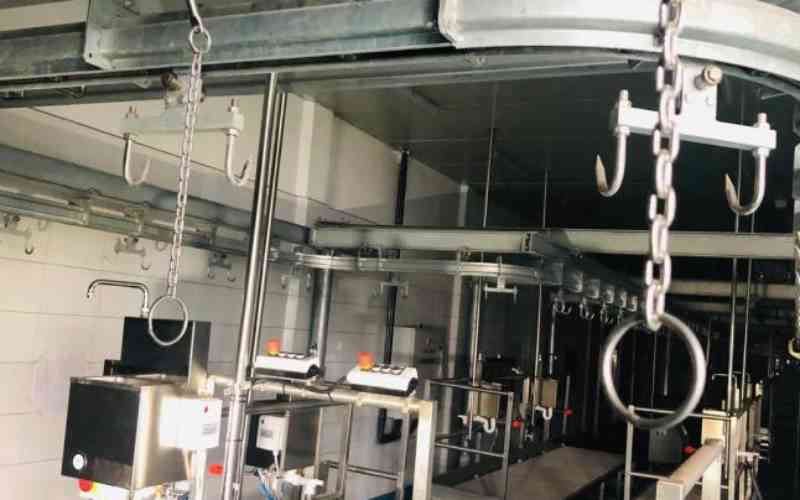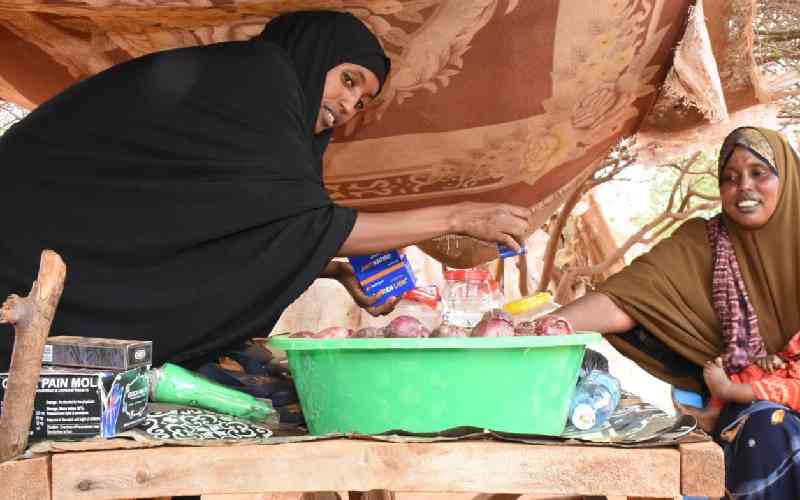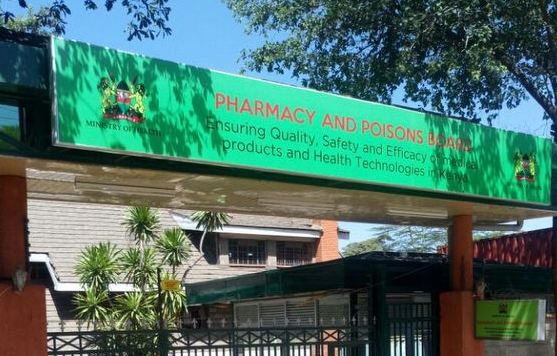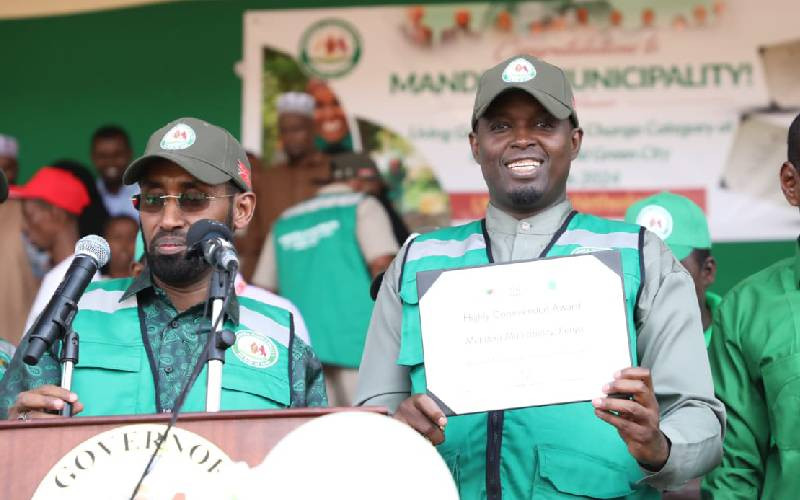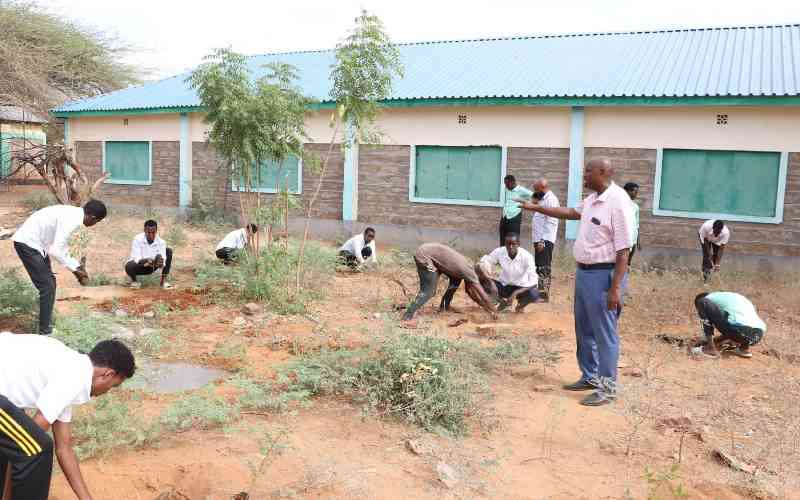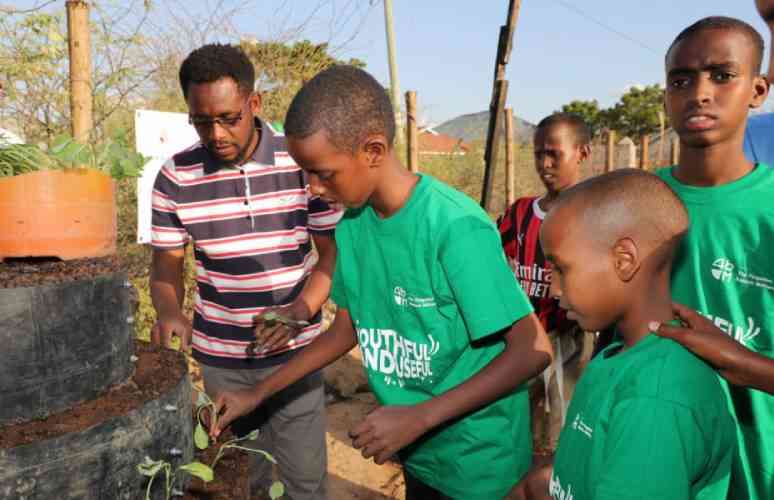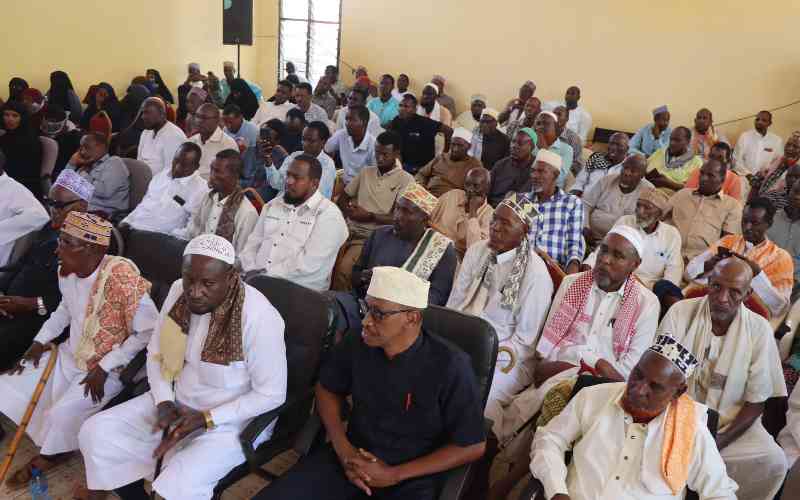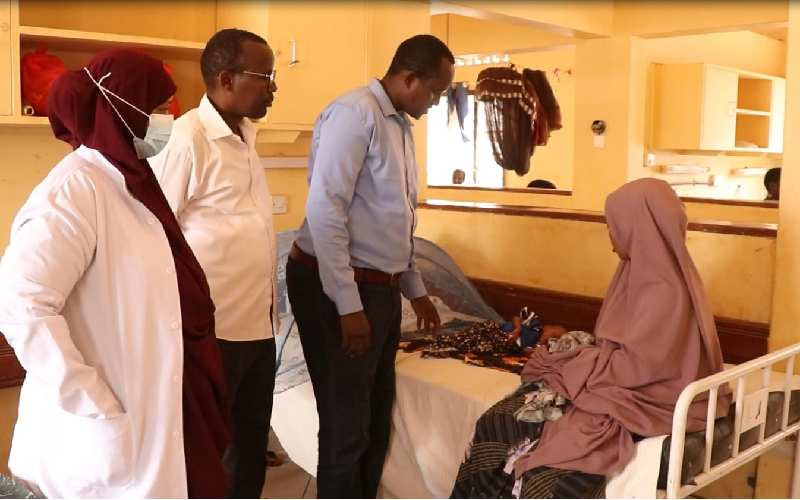
An eerie silence sweeps across the children's ward at Mandera County Referral Hospital, with no wailing or murmurs that would normally rent the air.
Halima Osman sits cross-legged on a white sheet-covered rubber mattress in one corner. Muzamil, her nine-month-old baby, is being fed milk via a syringe in her arms. His glassy eyes and frail body are all symptoms of his illness.
He is malnourished, something most parents are afraid of. He could die if he is not treated.
The country is currently suffering from the worst drought in 40 years, with over 4.5 million Kenyans in the Arid and Semi-Arid Lands (ASALs) facing starvation. According to the 'Kenya Drought flash update No.6' report published by Unicef on December 6, 2022, approximately 2.14 million are suffering or at risk of malnutrition.
The main causes of malnutrition are acute food insecurity, which is characterised by low milk availability due to below-average milk production in 20 of the 23 ASAL counties; unfavourable terms of trade for livestock and crops; high food prices; increased morbidity; and severe lack of water, which is expected to last several months.
Drought is a manifestation of climate change caused by four consecutive failed rainy seasons. The late onset and uneven distribution of short rains from October to December 2022 have exacerbated the situation.
It has resulted in an increase in the death of livestock, the primary source of income for pastoralist communities in ASAL counties, exacerbating poverty and leaving them vulnerable to the scourge of malnutrition, as well as imposing a disease burden on hospitals in the region.
- Goats, chickens give hope to malnourished Kitui residents
- Kenya braces for drier than usual conditions in 2025
Keep Reading
According to hospital records, the baby has been bedridden for the past two weeks.
"I discovered that the hospital was the only place where my child could survive because there was no food at home," Halima said.
She had travelled from a remote village in Mandera county in search of food after their livestock, their primary source of income, had been relocated to the Ethiopian grasslands.
The baby's health deteriorated as a result of poverty, which was exacerbated by the loss of livelihood due to the drought. He was eventually admitted to the referral hospital.
"His mother is unable to produce enough milk to feed the child, which is why he is in our care. His health is improving, and we hope to be able to discharge him once he has been cured," said a nurse who was caring for him.
Other frail infants lie expressionless on their beds in the same ward as Muzamil. They are suffering from severe malnutrition, and their admission by the numbers reflects the country's dire situation.
According to Mandera Health CEC Mohamud Eda, as of December 22, at least 106 malnourished children had been admitted across the county's hospitals.
"A big number of them are below the age of five and are suffering from malnutrition coupled with extreme complications. In addition to severe malnutrition, the children are vulnerable to pneumonia, tuberculosis, and diarrhoea," Eda said.
The situation is not improving in neighbouring Marsabit county, which borders Ethiopia to the north and Samburu County to the south.
Between January and October 30, 2022, a total of 14,592 children were admitted to the county's various malnutrition feeding programmes - the Therapeutic feeding programme and the supplementary feeding programme.
According to data relayed by the Marsabit County Government, 3,791 of these children were severely malnourished, while 10,801 were acutely malnourished. There were 7,056 severely malnourished pregnant and lactating mothers.

Marsabit County nutrition coordinator David Buke identified Laisamis and North Horr sub-counties as malnutrition hotspots, closely followed by Moyale sub-county (Golbo, Uran, and Obu wards) and Saku sub-county (Karare and Sagante wards) as malnutrition hotspots that require immediate intervention.
"Inadequate intake of food due to the drought is the major accelerator of malnutrition in Marsabit. Pastoralists make up 80 per cent of the population and rely on livestock for a living.
"They, on the other hand, have lost all of their livestock as a result of the drought and are no longer able to put food on the table," said Buke.
He expressed regret that 11 severely malnourished people from Ileret village had died between February and December, with children under the age of five, pregnant and lactating women, the elderly, and people with HIV/Aids being the most vulnerable groups.
Buke said the situation was so bad that milk had to be bought in Central Kenya. The county's biggest challenge is maintaining the feeding programmes, which require a lot of resources to run.
"To treat one malnourished child, you'll need one box of ready-to-use therapeutic feeds, which costs more than Sh10,000, so we can't do it alone," Buke said.
Access to the communities to administer treatment can also be difficult at times due to their movement from one zone to another in search of pasture and water. Then there's the growing risk of mental illness among former livestock owners who have lost their means of subsistence due to the drought.
There is also the age-long challenge of marginalisation.
"If the government could have implemented development infrastructure such as dams and irrigation schemes over the years, communities in Marsabit and other ASAL counties would be able to mitigate the effects of drought and reduce malnutrition cases," said Buke.
The county has formed alliances with organisations such as Unicef, the World Food Programme (WFP), and the Kenya Red Cross, which are supplementing the government's efforts to acquire necessary commodities.
 The Standard Group Plc is a multi-media organization with investments in media platforms spanning newspaper print
operations, television, radio broadcasting, digital and online services. The Standard Group is recognized as a
leading multi-media house in Kenya with a key influence in matters of national and international interest.
The Standard Group Plc is a multi-media organization with investments in media platforms spanning newspaper print
operations, television, radio broadcasting, digital and online services. The Standard Group is recognized as a
leading multi-media house in Kenya with a key influence in matters of national and international interest.



